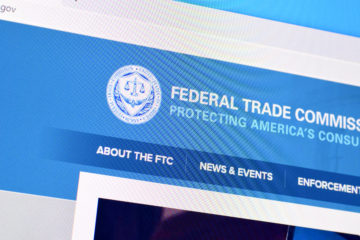Market Institute President Charles Sauer has a new article in RealClear Policy looking at what drives an innovative economy and what hurts it.
“For years, special interests have used the specter of the so-called “patent troll” in their never-ending attempt to vilify innovators and undermine the patent system. This campaign was done to advance the agenda of big companies who wanted to use patented technologies without paying for them. They (cleverly) created a false bogeyman to create policies that it easier to engage in outright patent theft or piracy.
And, while those terms might sound over the top — attacking the backbone of our economy is worse. As an economy we need innovation and coming out of a pandemic and trying to stay ahead of emerging variants innovation is as important now as it has ever been.
Do we promote innovation by increasing the barriers or lower them?
In some ways this argument goes back 10 years to the passage of the American Invents Act (AIA), and in others it goes all the way back to the founding of our country. The people that can’t innovate always want to steal what isn’t theirs.
Before declaring our independence, the King would grant the ownership of ideas to his friends. Understanding the absurdity of this cronyism — the founders included the right to a patent (for a limited time) as the only explicit right in the constitution. A few years later when the first Congress met — the House of Representatives met on the first floor and the Senate on the Second floor — next to Senate was the Machine Room which included the most important innovations of the day.
This small difference provided the incentive needed for innovation to take off in America.
Fast forward a few hundred years and the “Kings” friends are still mad that they aren’t just granted the rights to the ideas of others. That is why in 2010 this group of cronies and pirates pushed the American Invents Act. At every turn this bill made it harder to invent — from creating a new post-grant review process that has since been referred to as a “Patent Death Squad” to changing the system from a first-to-invent to a first-to-file system. Meaning that not only does the small inventor need to have idea — but they now need to beat the large market incumbents to the patent office with a large check in their pocket for a lawyer to write their patent if they want it to be defensible.
In fact, immediately after the passage of the AIA the system was so bad that the USPTO was laughed at in court when they explained the procedures, they used for the Administrative Kangaroo court created by the AIA. In one case, the Patent Trial and Appeals Board (PTAB) ruled for the inventor, but the Director of the USPTO wasn’t happy with that ruling so she added another board member. The board again ruled for the inventor, so the director added yet another member to the board and the inventor’s patent was takenaway.
In another example, an inventor had his invention challenged by an infringer and the Obama Administration’s USPTO filed a brief opposing the inventor. Fortunately for the inventor, the Administration changed as did the leadership of the USPTO and the amicus brief was removed from the case. The inventor finally won — but only after spending millions of dollars and getting a bit lucky that a pro-inventor Director of the USPTO was in office.
The rules and laws governing our patent system don’t have to lean toward the inventor — although that would be great for innovation. They just shouldn’t benefit patent thieves. Infringers shouldn’t be allowed to use both the federal courts and the Administrative Kangaroo Court at the same time, infringers shouldn’t be able to avoid paying damages, or be able to continue selling their infringing products.”


